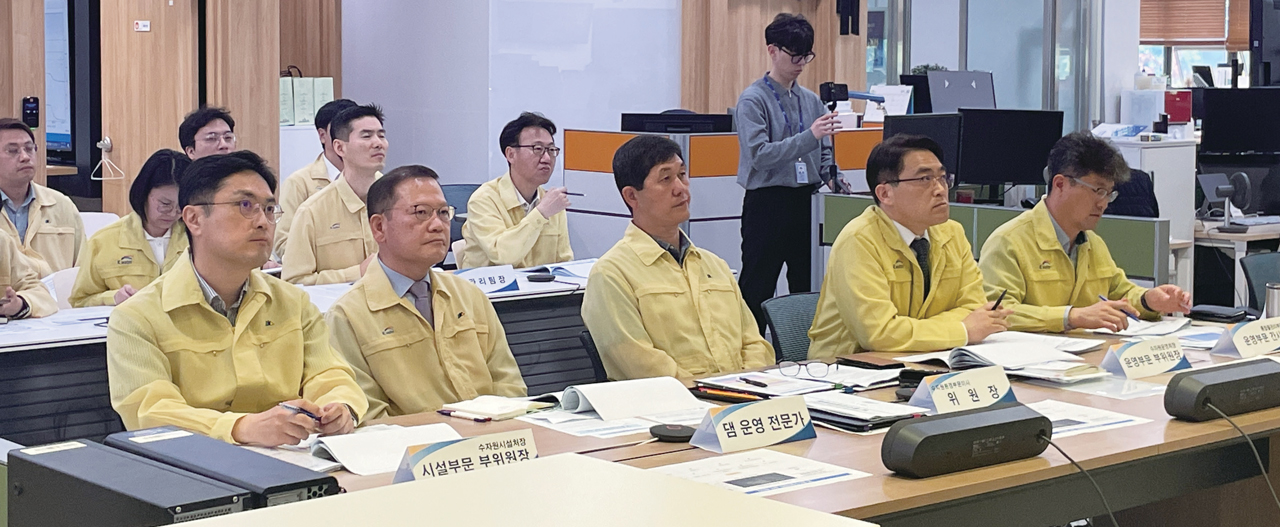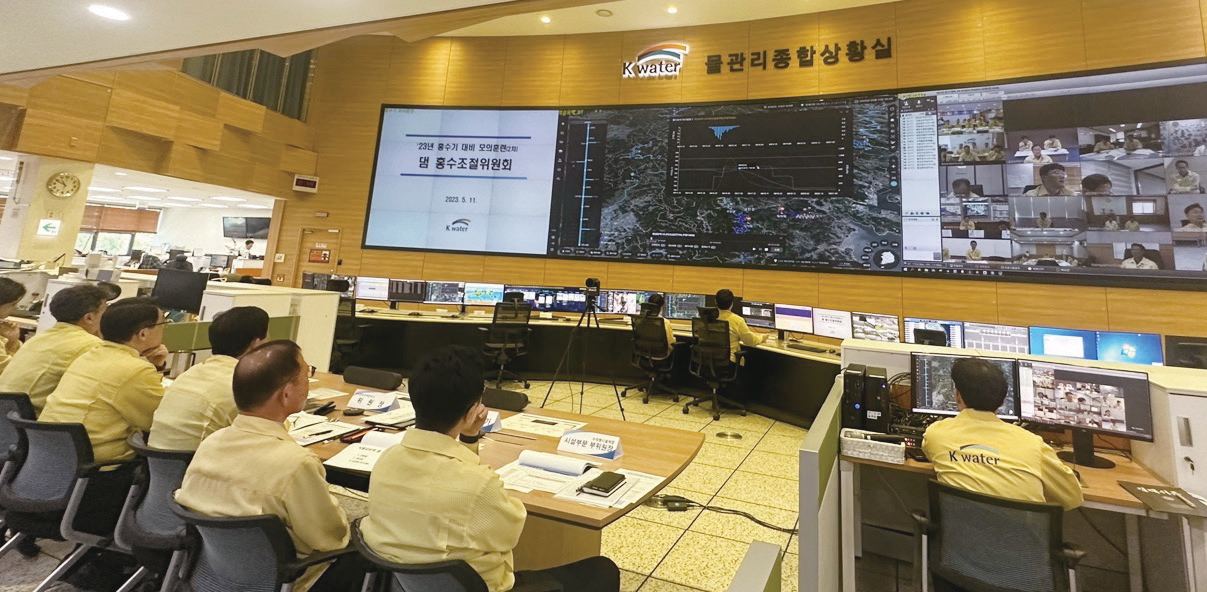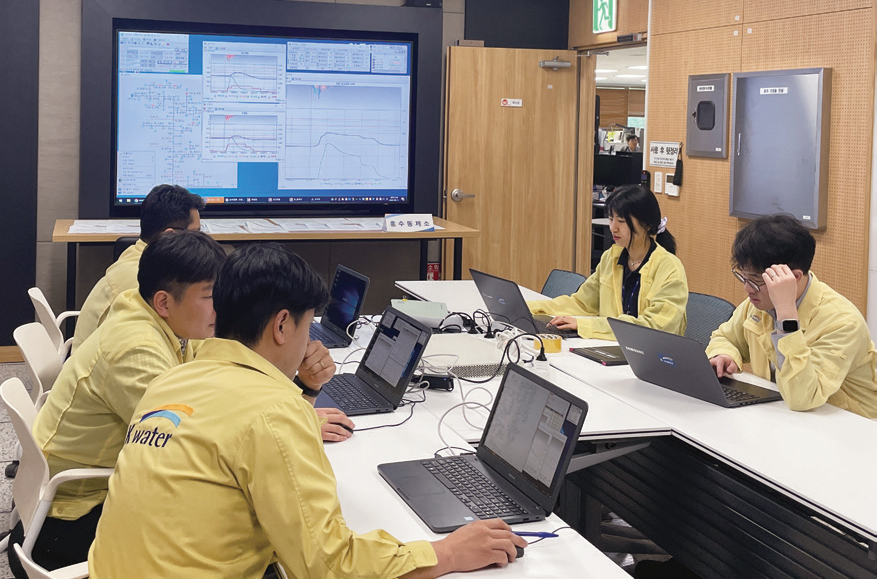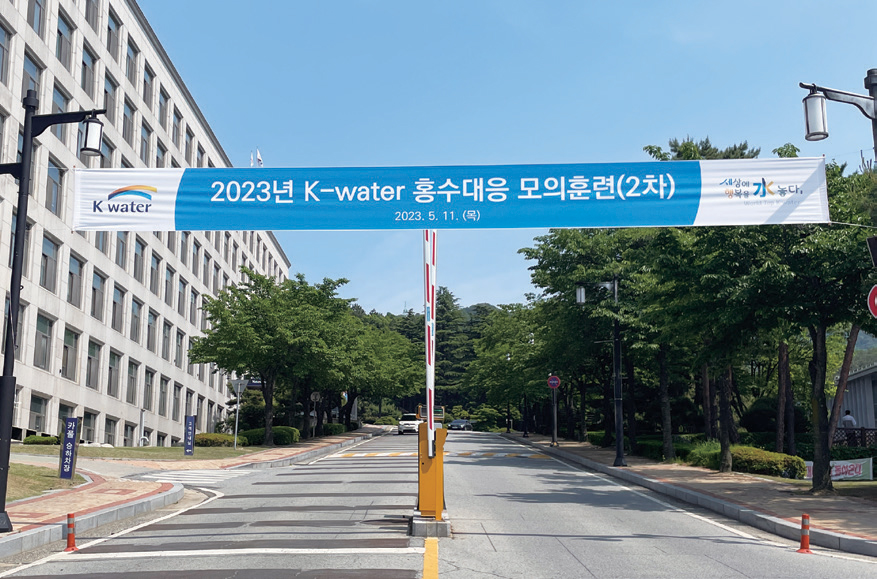-
 2023. June VOL. 663
2023. June VOL. 663

On May 11, K-water conducted the ‘2nd K-water drill for the flood-prone rainy season’. The drill is a part of the inspection of the flood response system ahead of the onset of the rainy season, under the scenario of an extreme flood caused by climate change. The aim of the drill is to strengthen the ability of K-water Headquarters and river basin headquarters and branches to respond to crises.
Earlier in April (25 ~ 26th), the first drill was carried out at a company-wide level with a focus on improving the ability in the field to overcome floods, with the participation of a total 42 sites (Target facilities: Dams, ferries, estuary banks, Ara Waterway, Sihwa Tidal Power Station).
The second drill is an actual role-based, dam-focused exercise to enhance the ability of individual river basins to respond to floods. Participants include the Water Resources Facilities Maintenance Department, the Water Resources Operation Department, River Basin Management Departments (Hangang River, Geumgang River, Yeongsanggang & Seomgjingang Rivers, and Nakdonggang River), and dam offices. The drill also included performing flood analysis and decision-making for flood control, floodgate-opening procedures including approval, report and notification, and the Dam Flood Control Committee meeting.
In the drill, optimal flood analysis and decisions were made to overcome extreme rainfalls in the rivers downstream of the dams. Each step of the floodgate-opening procedure was taken at the right time following a prior notice, report and notification at all of the 12 dams. Before the floodgate was opened, the local residents and municipalities were actually notified to enhance the joint response ability.
Gyeong-yoon Jeong, chair of the Dam Flood Control Committee said, “Flood control is one of K-water’s basic responsibilities, and it is absolutely necessary to prepare thoroughly for the flood-prone rainy season. We need to put into perspective the conditions and circumstances of dams and rivers downstream, when operating dams. Training and workshops on overall dam operation should be provided to help all K-water employees enhance their competence.”

‘The 2nd K-water drill for the flood-prone rainy season’ was conducted under the scenario of heavy rainfalls countrywide due to a typhoon and the resulting flood. The time was reduced to a third of the actual situation, with one minute in drill time corresponding to 3 minutes in reality. The condensed time schedule was applicable to the flood control response including the prior notice of floodgate opening, and its request, approval and notification to speed up the decision-making process and implementation of the procedures.
The drill started as the Water Resources Operation Department provided the weather information through a preliminary special report issued by the Korea Meteorological Administration.
Next, the Dam & Flood Control Committee announced and discussed the flood analysis results presented by respective river basin headquarters. In particular, the committee demonstrated how the optimal flood control decision can be made, given the conditions of the rivers downstream by using the related digital twin to be used in a pilot project this year. The digital twin is a technology that re-creates reality in a virtual space to simulate a scenario in advance and work out solutions. A joint exercise was conducted to warn against the floodgate opening and swiftly inform related organizations, municipalities and local residents of a potential flood risk due to the release of water. The drill also involved situational response training to change the amount of water release in an emergency.
Finally, the drill participants including related organizations, local governments and local residents were notified of the end of the water discharge and the competent facilities were inspected to finish up the drill. K-water will use the results of the drill for training at respective river basins to increase their ability to overcome floods before the flood-prone rainy season begins.

